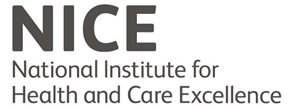NICE Guidelines
 New NICE recommendations on infertility treatment
New NICE recommendations on infertility treatment
The updated NICE guidelines have been published following an extensive consultation on draft guidelines issued in May 2012. The new guidelines set out many recommendations, the most high profile of which are outlined below.
IVF
NICE now recommends that women aged under 40 who have been unable to conceive after two years of regular unprotected intercourse (or 12 cycles of artificial insemination (IUI), in which semen is introduced into the woman’s vagina), should be offered three full cycles of IVF. These IVF cycles can be either with or without intra-cytoplasmic sperm injection (ICSI), a technique in which a single sperm is injected into the egg. If the woman reaches the age of 40 during treatment, the current full cycle should be completed, but no further cycles offered. This is one year earlier than was previously recommended.
Women aged 40-42 years who have been unable to conceive after two years of regular unprotected intercourse (or 12 cycles of artificial insemination) should now be offered one full cycle of IVF, with or without ICSI. However, NICE recommends they must also:
- have never previously had IVF treatment
- show no evidence of low ovarian reserve (this is when eggs in the ovary are impaired or low in number)
- have been informed of the additional implications of IVF and pregnancy at this age
- Previously, NICE did not recommend IVF for women over 39.
Ovarian stimulation
Women with unexplained infertility (where the cause of the problem is not known) should not be offered drugs which stimulate the ovaries (such as clomifene citrate, anastrozole or letrozole), as these drugs are now thought to be an ineffective treatment for the problem.
Intrauterine insemination
Couples with unexplained infertility, women with mild endometriosis, or men who have ‘mild male infertility’, should normally attempt to conceive through regular vaginal intercourse for two years rather than receive intrauterine insemination. NICE says this is because new evidence shows that it is no better at achieving a live birth than people attempting to conceive through regular vaginal intercourse.
However, intrauterine insemination may still be suitable in certain circumstances where vaginal intercourse would not be suitable or appropriate, for example:
- people who are unable to, or would find it very difficult to, have vaginal intercourse because of a clinically diagnosed physical disability or psychosexual problem, who are using partner or donor sperm
- people with conditions requiring specific consideration in relation to methods of conception (for example, where the man is HIV positive)
- people in same-sex relationships
Embryo transfers
The NICE guidelines also include new recommendations on the number of fresh or frozen embryos that should be transferred to a woman’s womb, these are designed to reduce the risk of multiple births following IVF. The recommendations state that:
- Women under 37 in their first IVF cycle should have only a single embryo transfer. In their second IVF cycle they should have a single embryo transfer if one or more top-quality embryos are available (embryo quality is assessed using a number of factors that point to the likelihood of an embryo leading to a successful pregnancy, such as the amount of cells in the embryo). Doctors should only consider using two embryos if no top-quality embryos are available. In the third IVF cycle, no more than two embryos should be transferred.
- Women aged 37–39 years in the first and second full IVF cycles should also have single embryo transfer if there are one or more top-quality embryos, and double embryo transfer should only be considered if there are no top-quality embryos. In the third cycle, no more than two embryos should be transferred.
- For women aged 40-42 years, double embryo transfer can be considered.